ABOUT FLORA, FAUNA AND THE OVERALL ATMOSPHERE IN THE BAY OF LIZNJAN
All the photographs in this post were taken on the 3rd of July 2021 ...
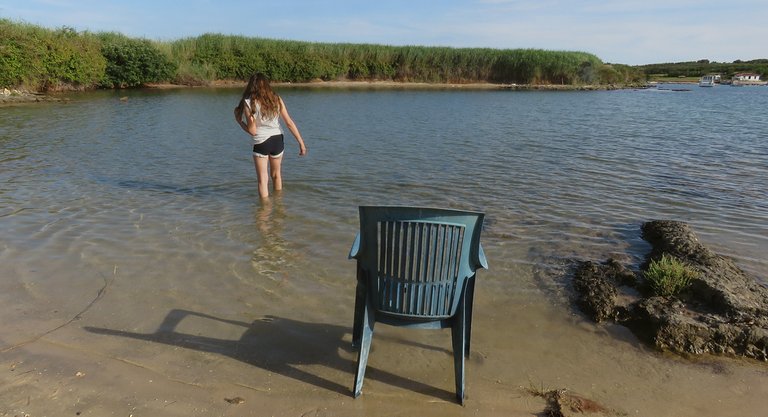
... in one of my favorite summer places.
On the stretch of coastline around the shallow waters in the bay of Liznjan.
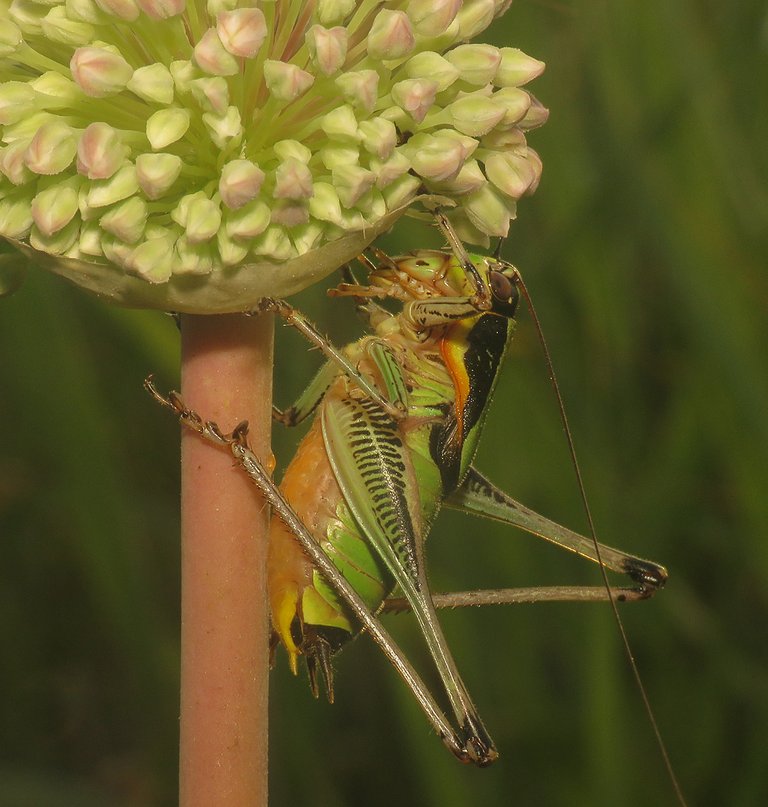
Here you can see one of the most common crickets in this coastal area, the Eupholidoptera schmidti bushcricket ...
... on the plant that covers big chunks of terrain ...

... along the small, muddy inlets.
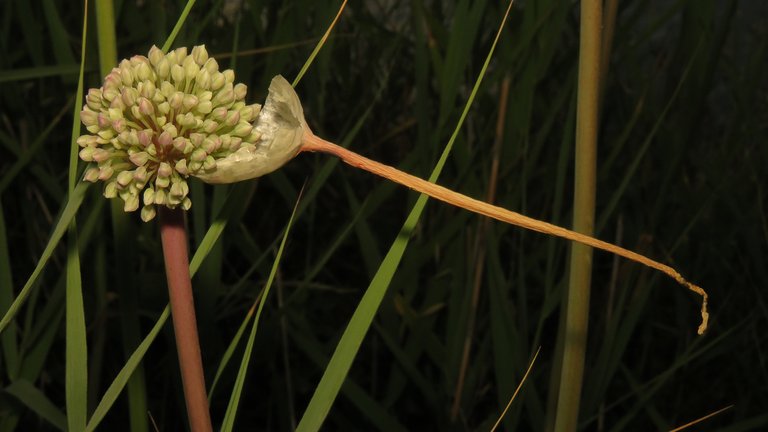
The plant in question is Allium commutatum, commonly known as the Sea garlic.
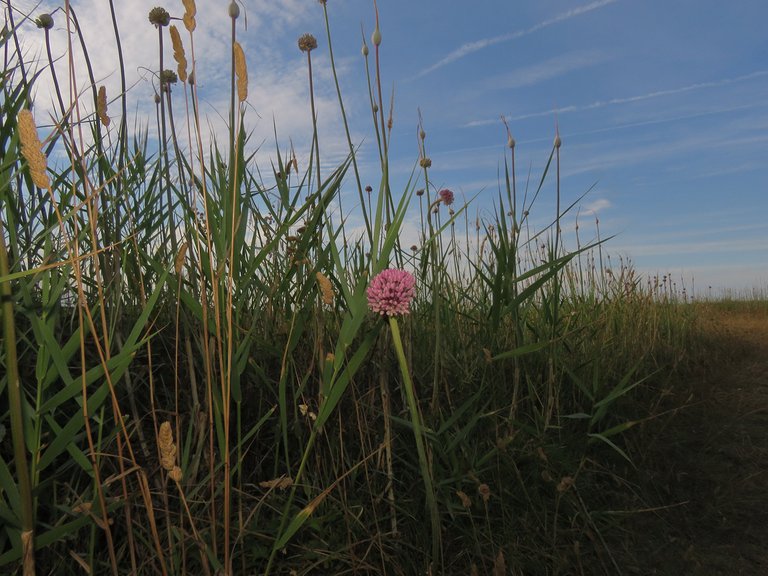
This tasty edible plant is native to the coastal areas all around the Mediterranean ...
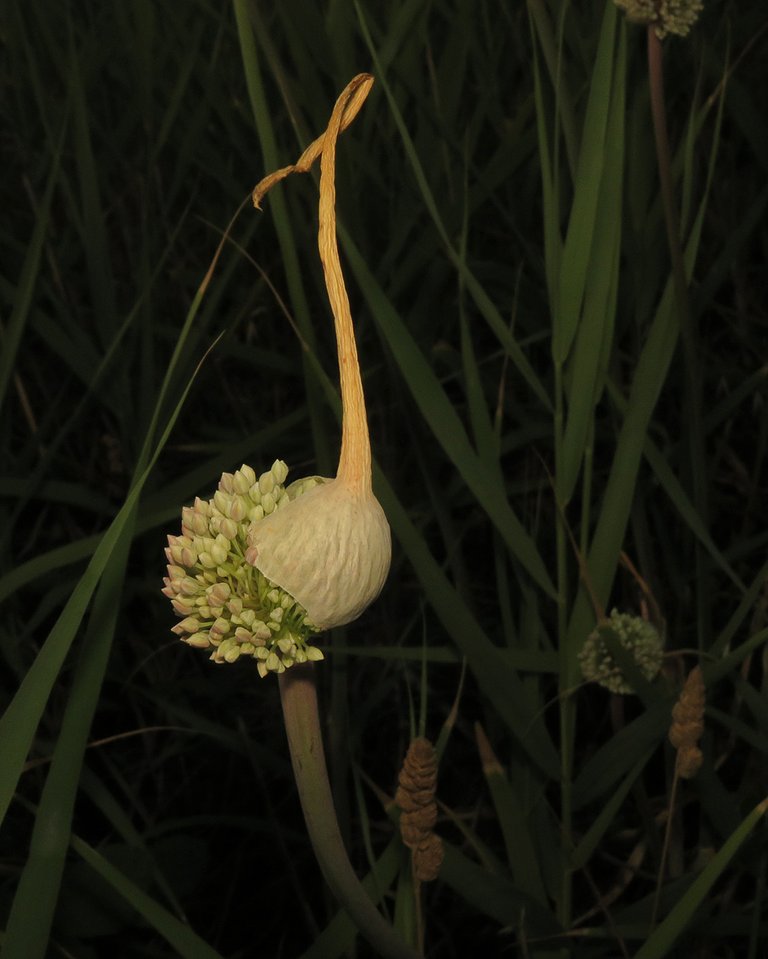
... where it grows on rocky slopes, among the pebbles in small inlets or like in this case ...
... among various herbaceous plants of the juicy meadows very close to the sea.
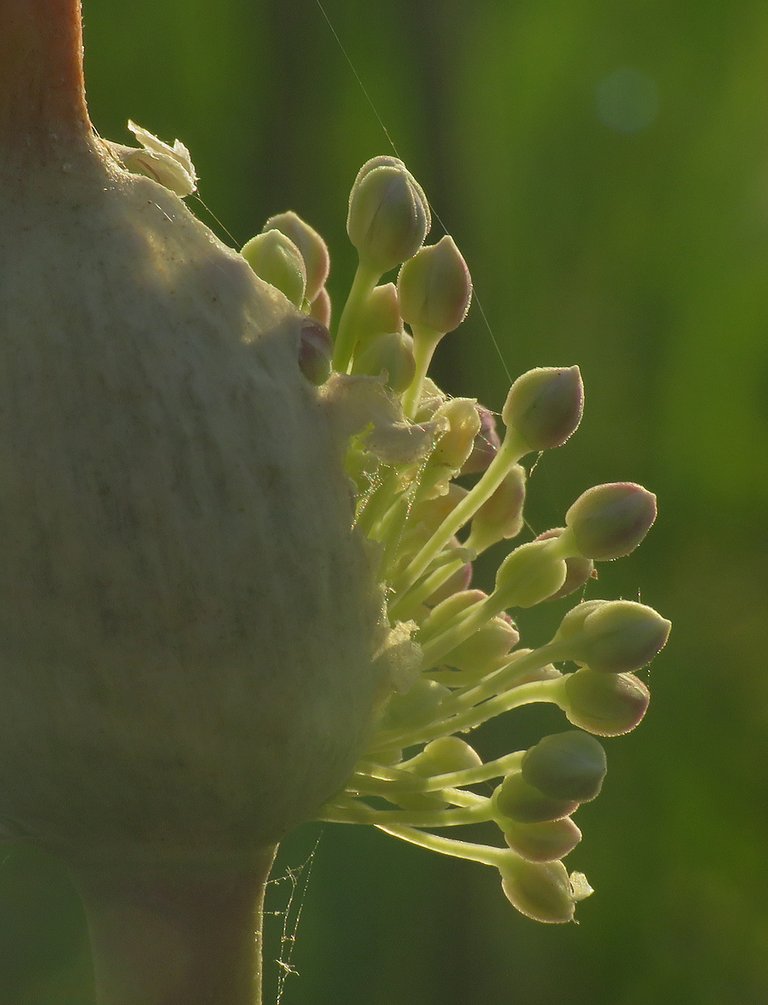
On the 3rd of July ...
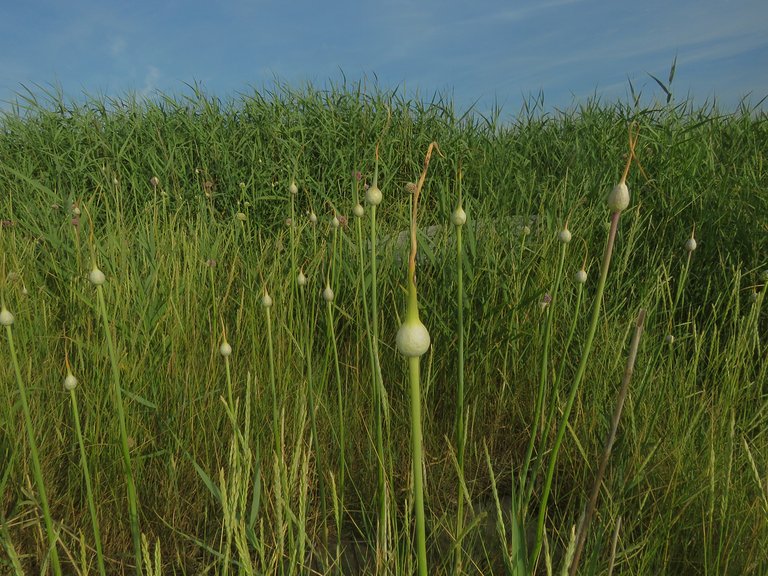
... about a third of those Allium commutatum flowers were still enclosed in their delicate envelopes ...
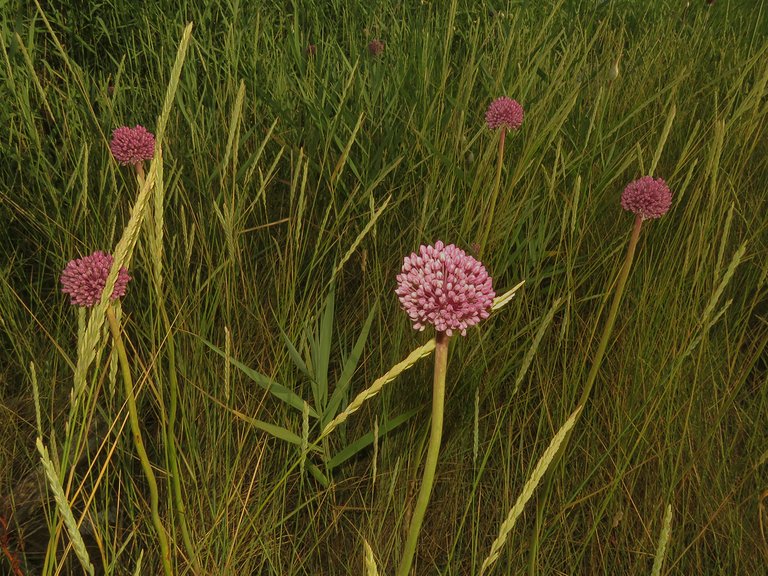
... while another third was completely developed, showing the lovely spherical clusters in all their photogenic glory.
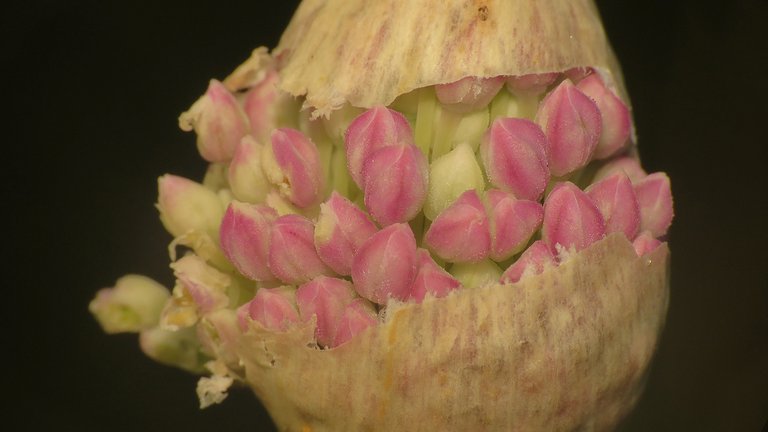
In between those two-thirds ...
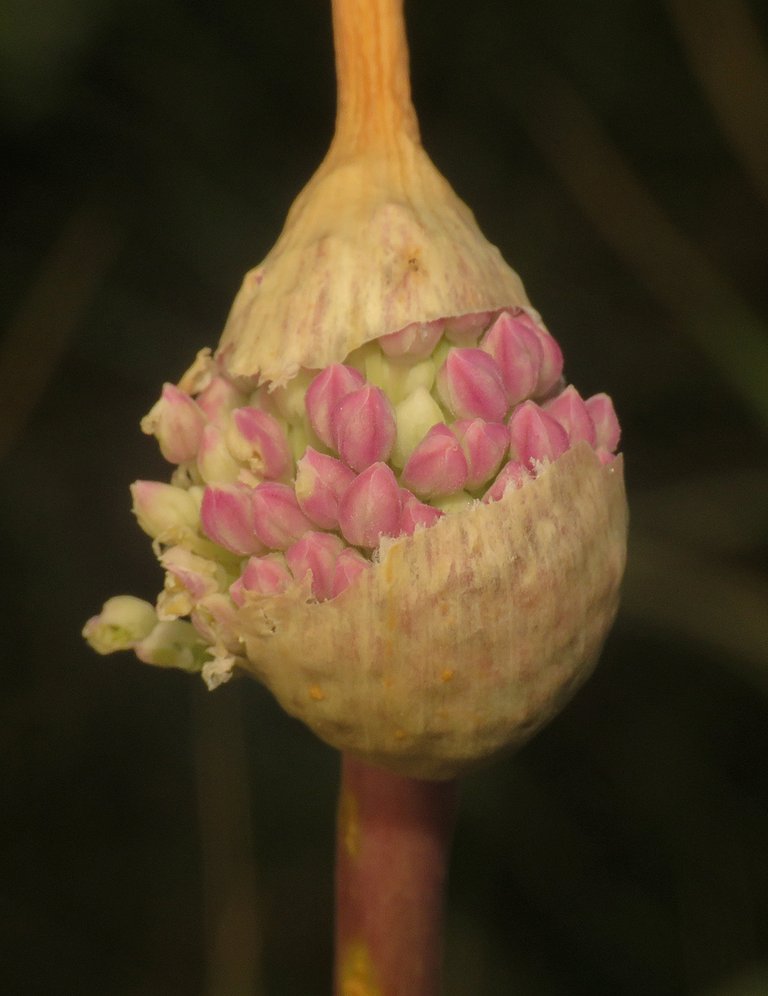
... there was a wide variety of transient stages. Here you can see a relatively recent crack in the envelope.
Here the envelope is dried out, ready to fall, and looks like some kind of extravagant hat.

Here you can see the remaining piece of envelope hanging from the flowerhead.
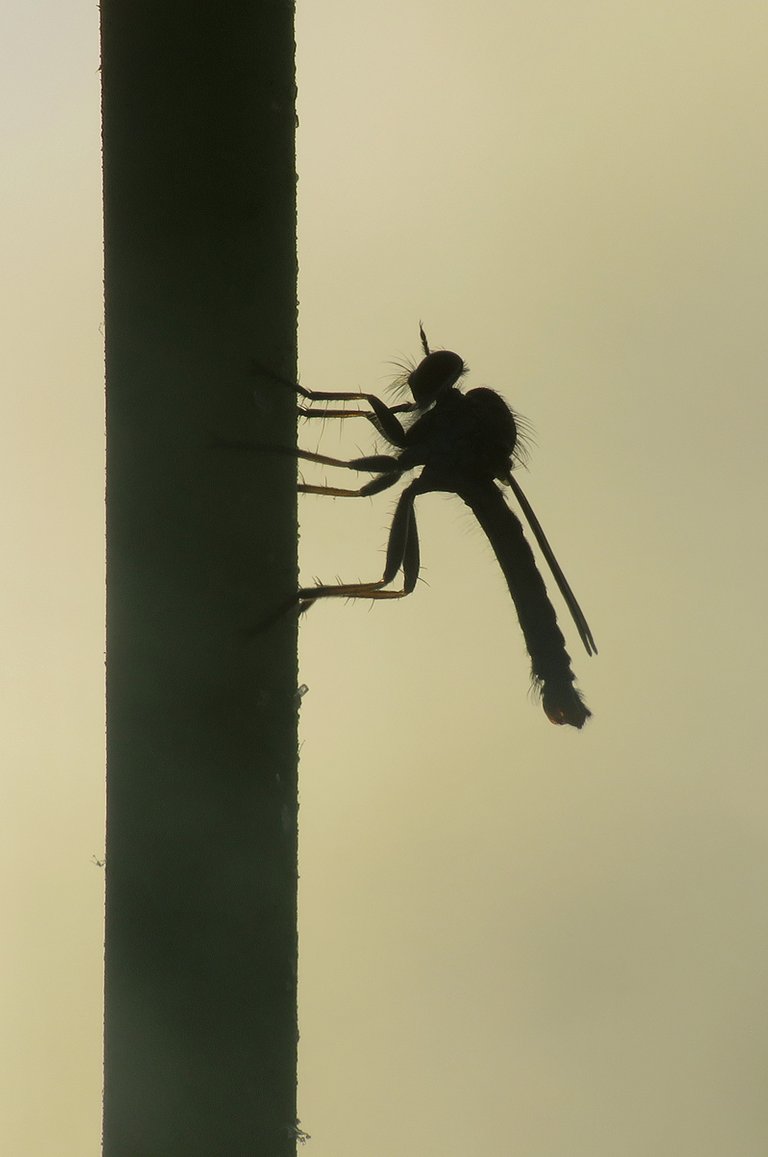
In this photograph taken some hours later, in the evening, the robber fly is resting on the stem of the plant.
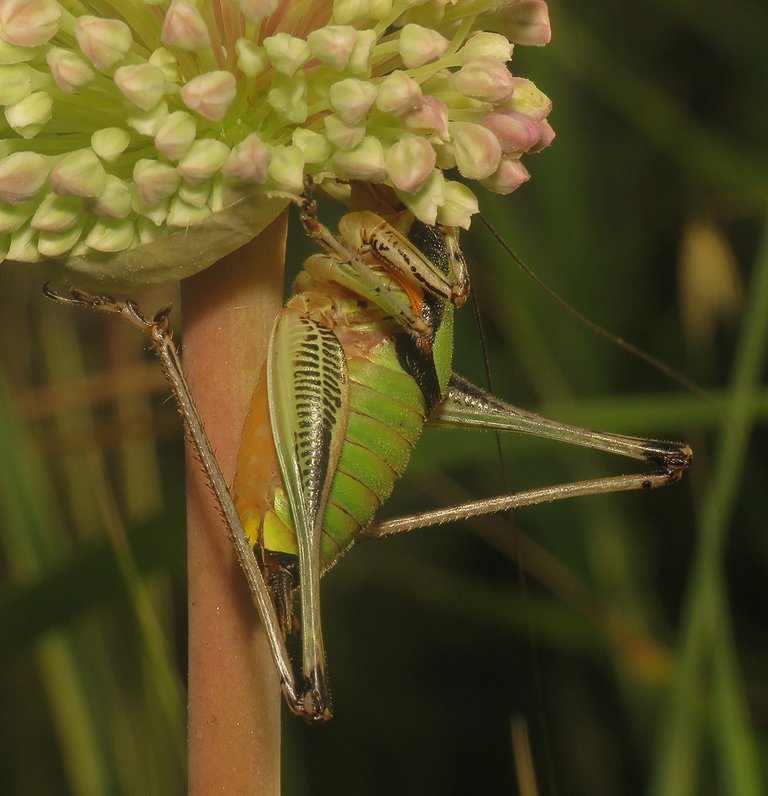
This pretty long botanical chapter of the post was opened with a bushcricket and with the same kind of cricket, the Eupholidoptera schmidti, is time to close the Allium commutatum part of the story.
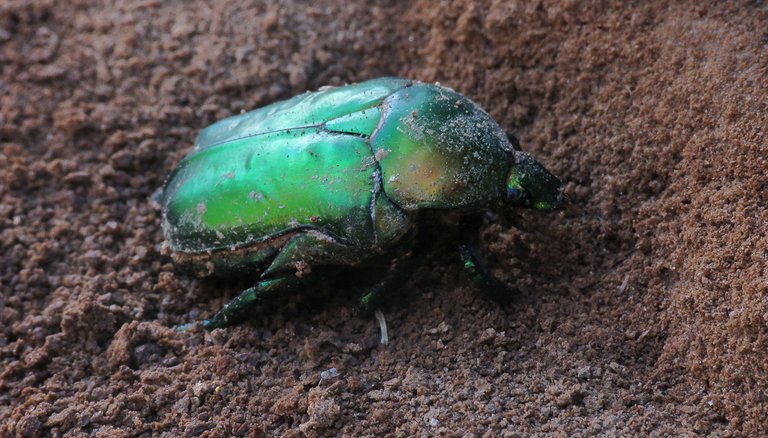
This shiny little corpse of the Protaetia aeruginosa beetle ...
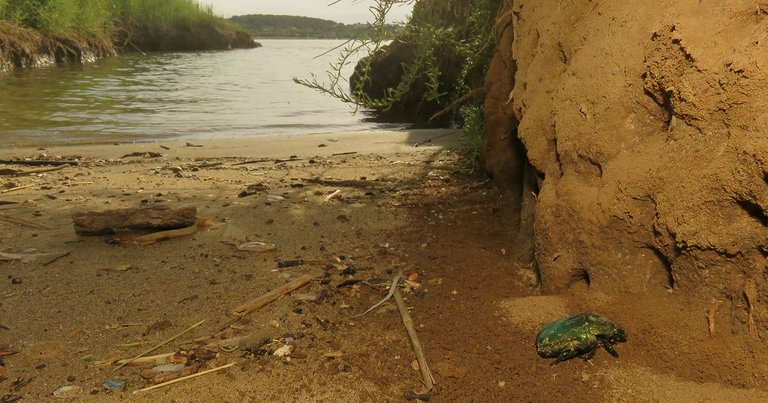
... was photographed in one of the many small, muddy inlets. While shooting the dead beetle ...
... I got surrounded by a gang of living ones.
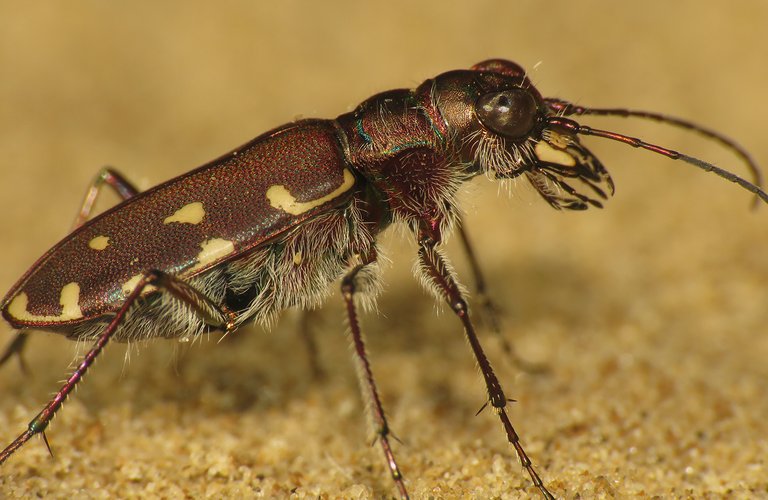
This is the Cicindela maritima ...
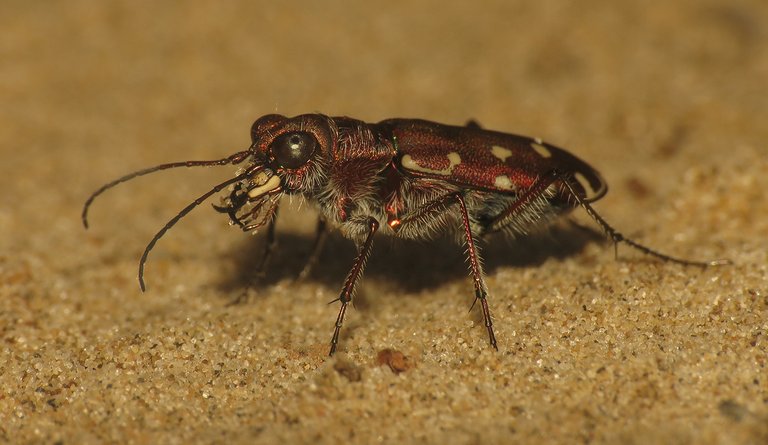
... a fast and agile predator that patrols the intertidal zone.
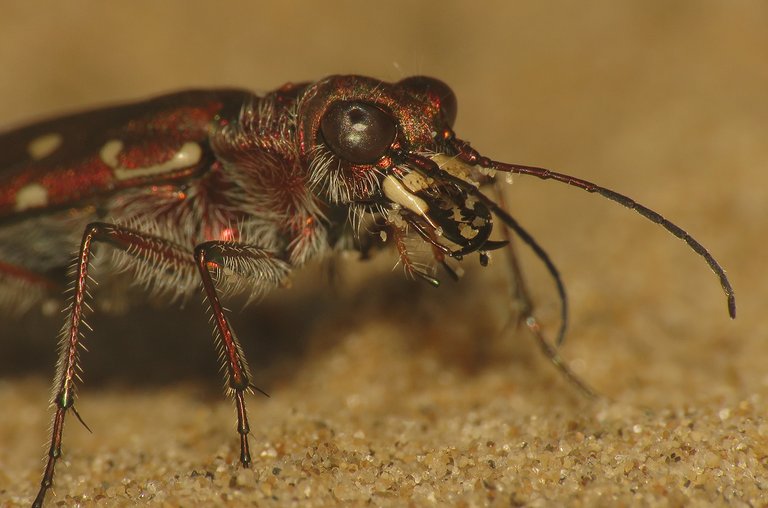
This type of ground beetle (Carabidae), is commonly known as the Tiger beetle. Tiger beetles (Cicindelinae subfamily) are a very colorful group. Many species are shiny, beautifully colored, with interesting patterns and markings on the elytra.
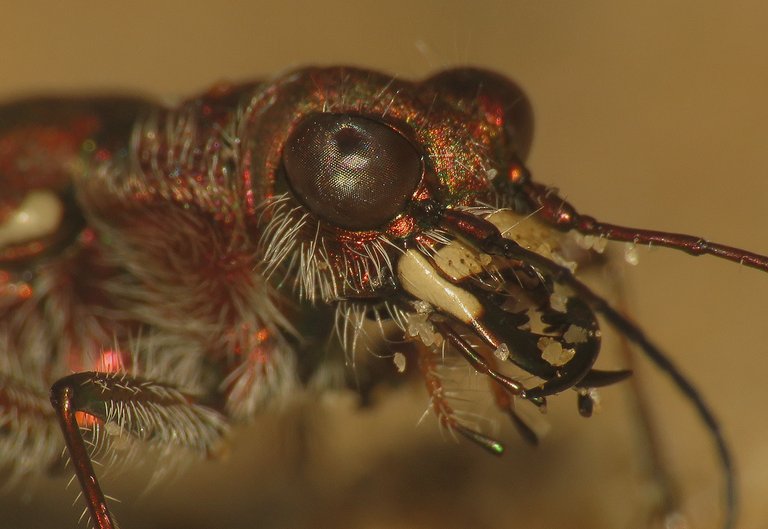
They are also typical predators. With long, agile legs and strong mandibles
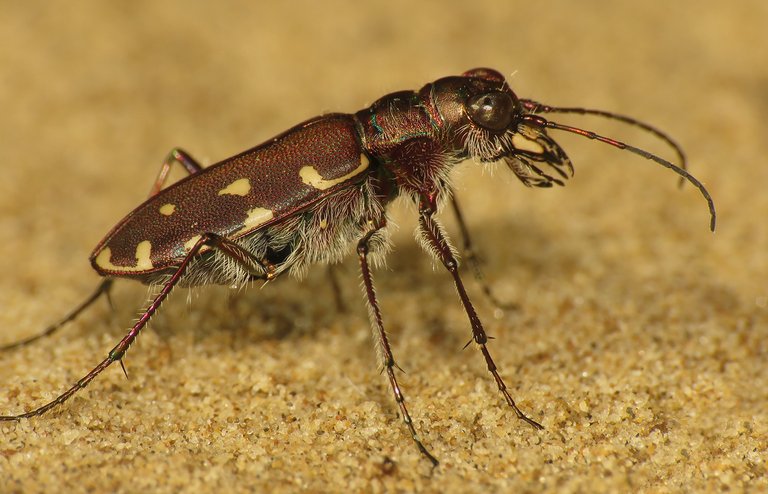
They are very hard, practically impossible to catch with the camera if you pursue them, but fortunately, if you sit down and wait for half an hour or so, they will first accept your presence on their hunting ground, and then get curious and explore the lens of the camera.
With a bit of patience, a frustrating chase can turn into a satisfying, meditative photo session.
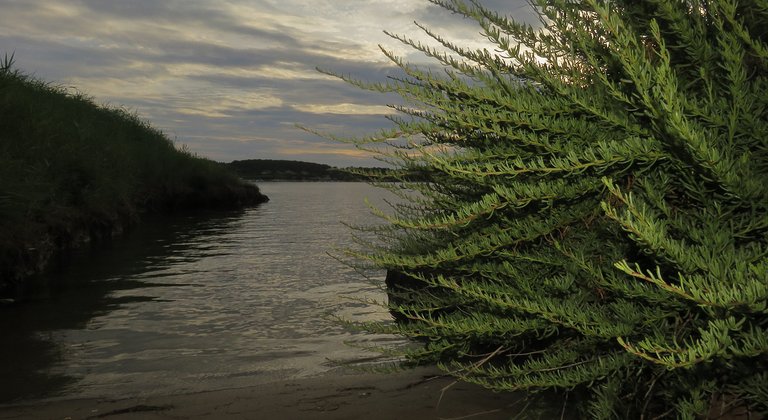
In this photograph, you can see the same small inlet photographed later when the sun was close to vanishing behind the horizon.
The well-lit plant in the foreground of the picture is the Limbarda crithmoides.
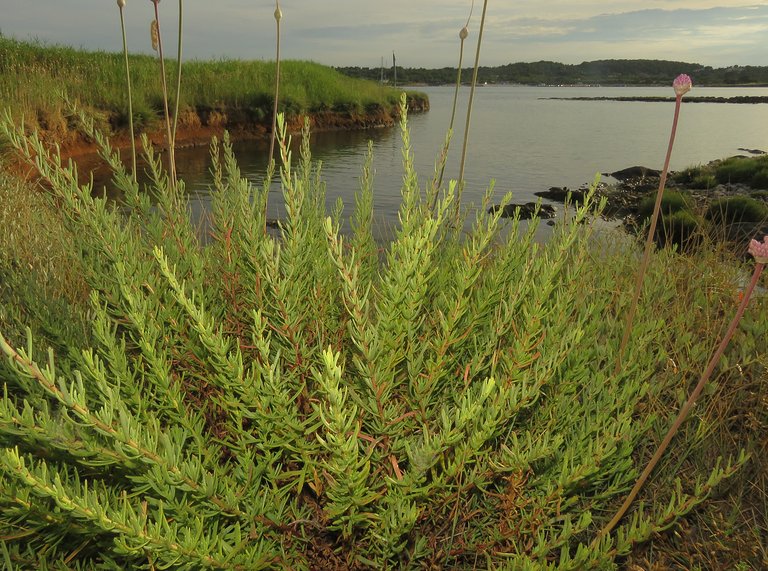
Here you can see it growing in the company of Allium commutatum. While sitting by the Limbarda crithmoides shown in this photograph and observing what's going on around the plant ...
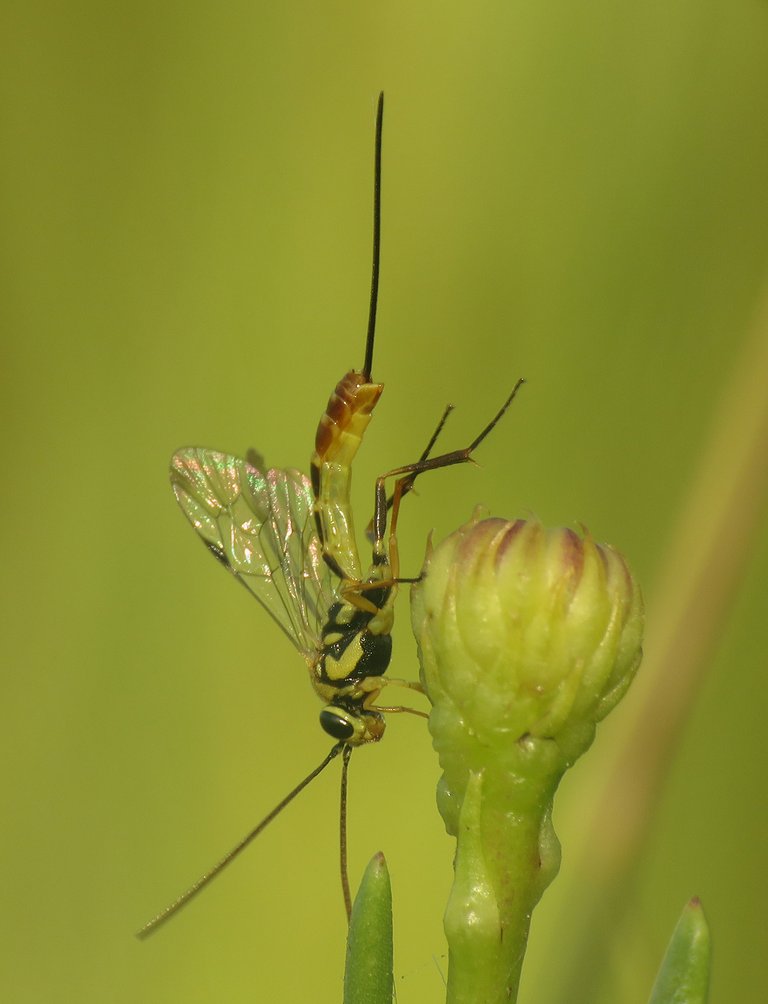
... back then, in the summer of this year that is counting the final hours of its final night, I saw this Ichneumon wasp for the first time.
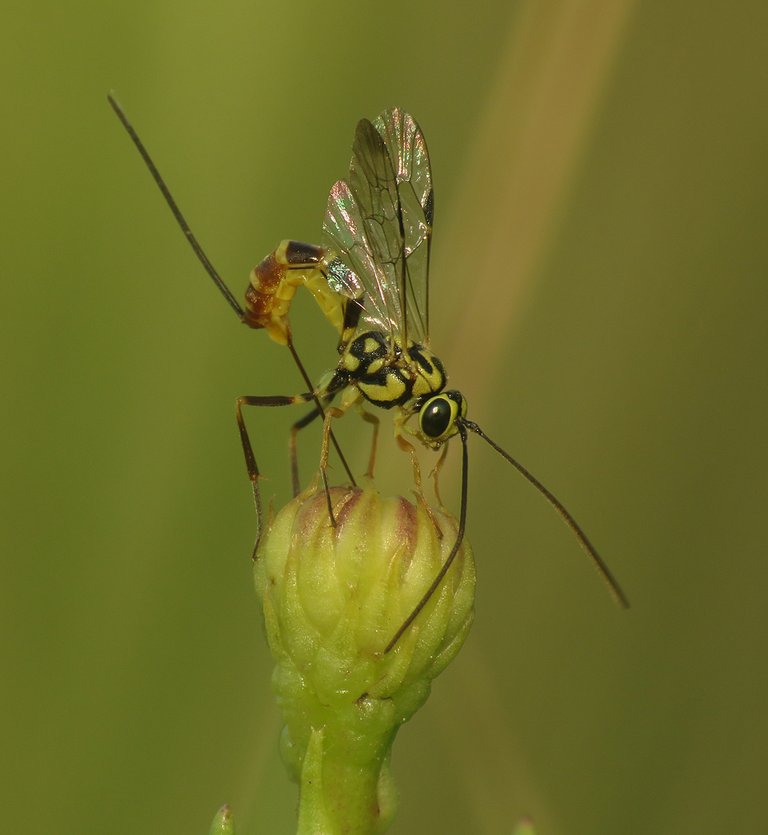
The wasp landed on the still closed flower ...
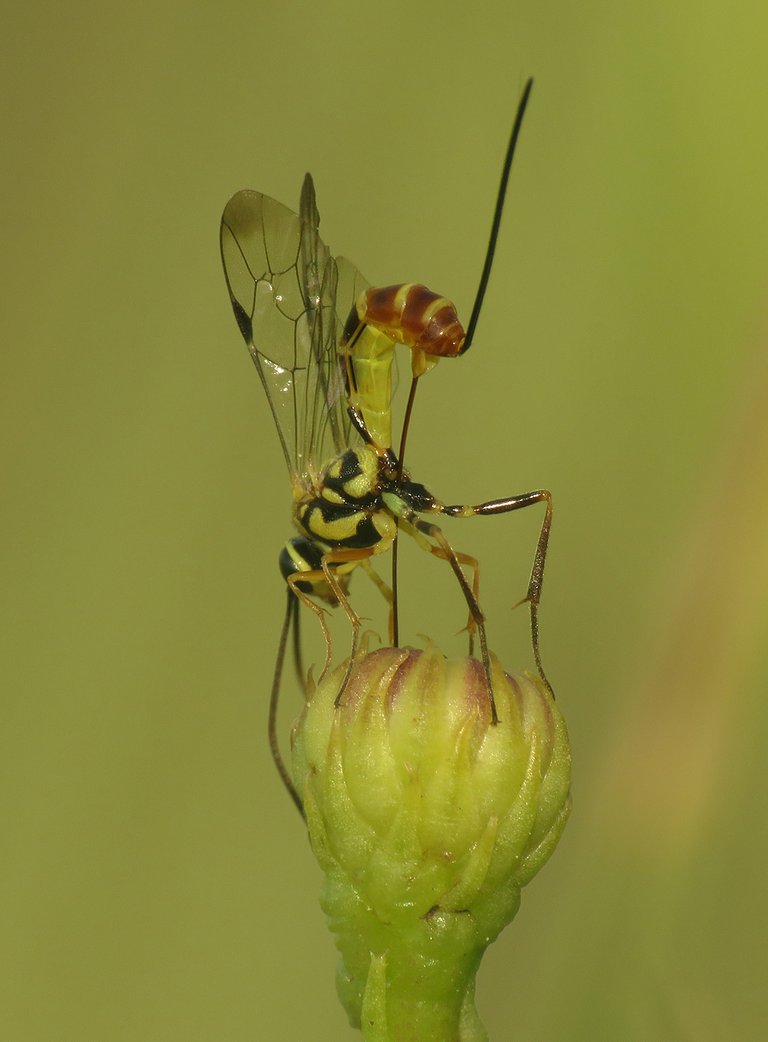
... and pierced it with the long, needle-like ovipositor.
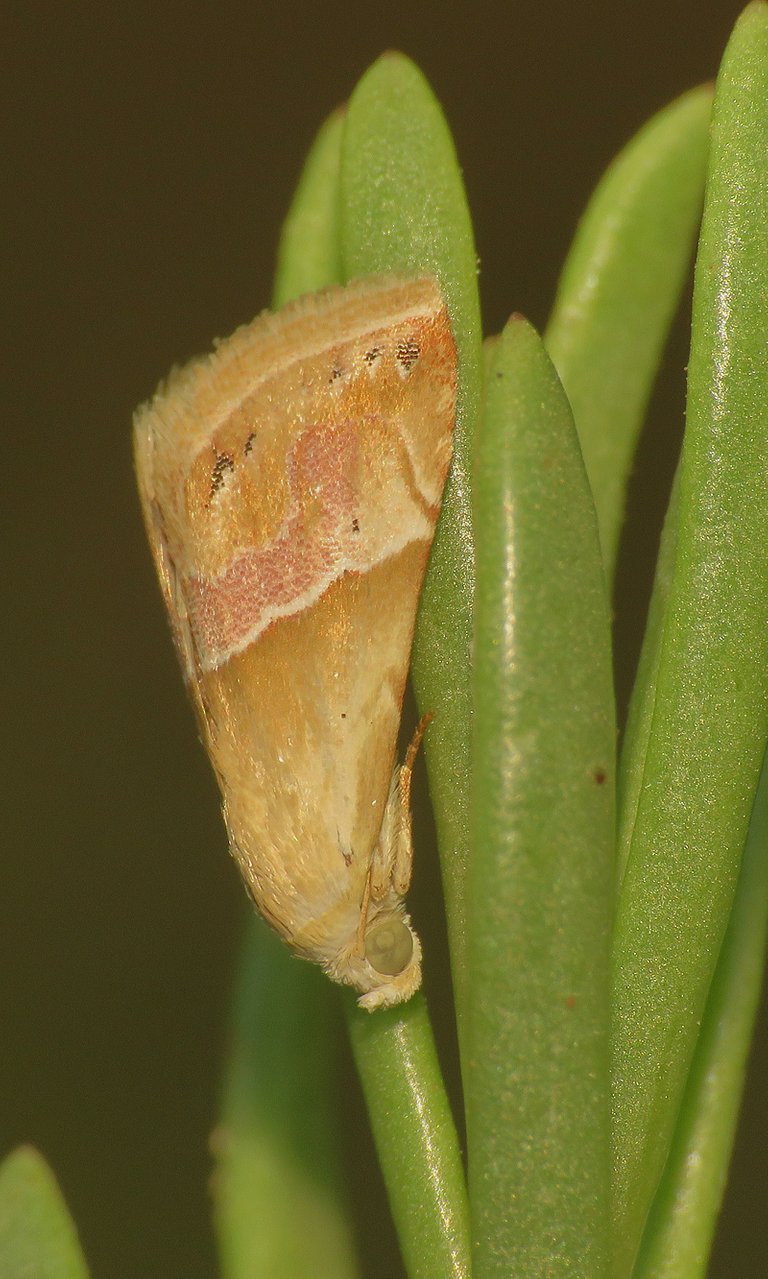
This small moth was just resting on the succulent foliage.
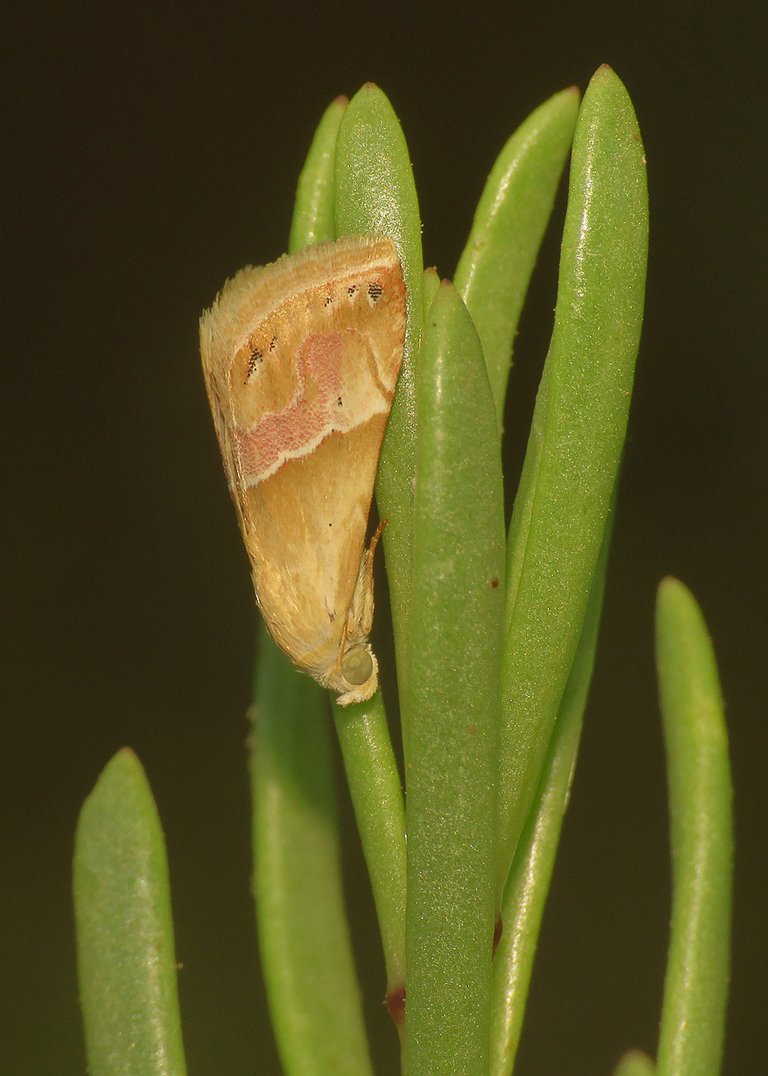
I can't tell you the exact species, but the family is Tortricidae.
While most inlets in this part of the bay are muddy, a couple of them are different.
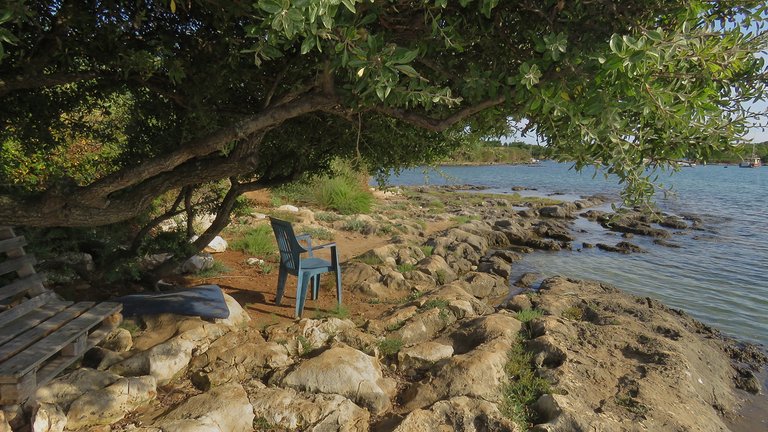
This one is mostly rocky with just a thin, slippery layer of mud and algae spread across the underwater rocks.
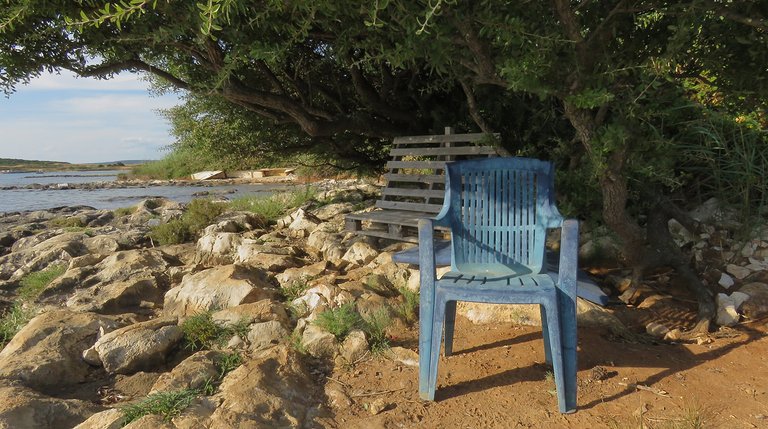
The inlet has also an old Pyrus amygdaliformis tree which provides a bit of shade on the beach. Someone brought an old plastic chair to make the place even more inviting and comfortable.
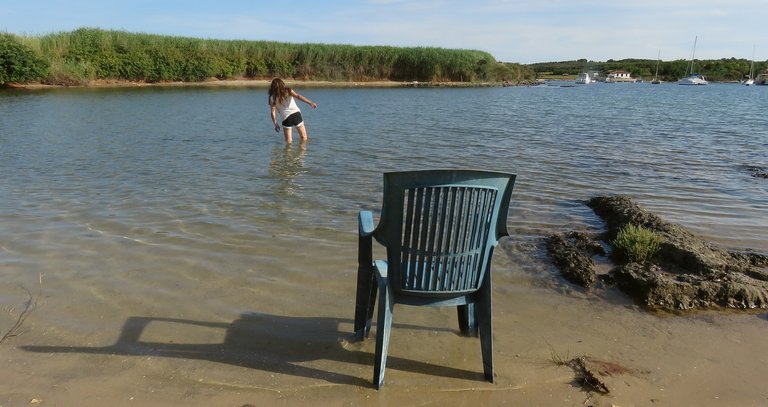
A friend was there with me on that hot summer day, took that chair, and moved it from the shade to the open, sunbathing-friendly place.
While walking through the lush green vegetation near the muddiest part of the bay, I came across this frontal part of some demolished small boat. Although nicely colored, it still looked like a piece of garbage that it was. But only when seen from a distance.
When I zoomed in and focused on details ...
... it was more like looking at a piece of contemporary art.
I dived into the accidental artwork and spent some time there ...
... lost in the flat world made of blue dots on the red surface.
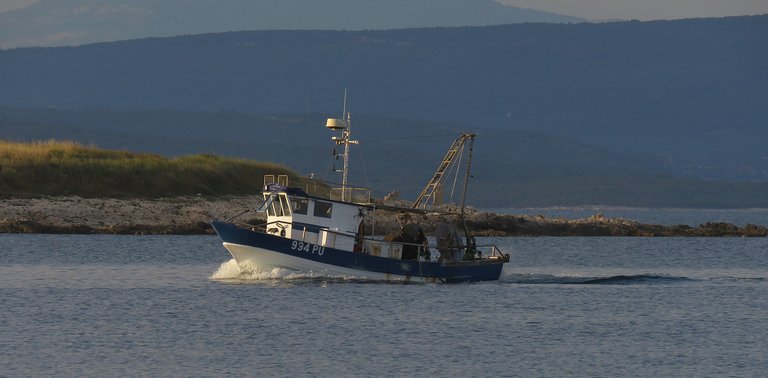
The small port used mostly by local people from the nearest village that goes by the name of Liznjan isn't far from the place where I was enjoying my 3rd of July by the sea.
As the evening was approaching, some boats were passing by ...
... directed to the dock at the end of the bay. At one point, this medium-sized fishing boat, equipped with nets for bottom-trawling ...
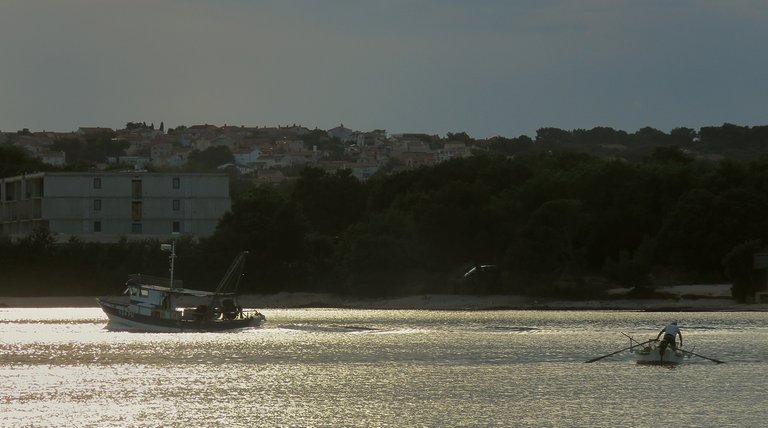
... passed by a man in the small boat with flat bottom used for fishing in the shallow water near the shore.
The man was working with fish traps.
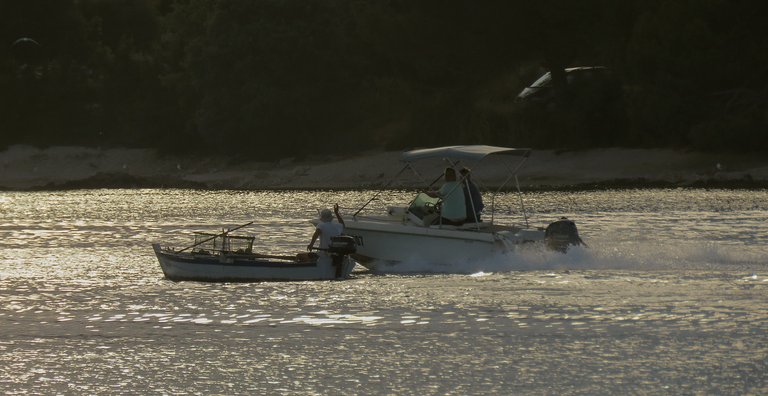
At one point a speedboat passed by.

These cranes grew on the shore across the bay from where I was standing.

Some pretty large hotel was under construction there.

The thing still looks more or less the same.
Here the focus has moved from the distant cranes to the insect on my side of the bay. A robber fly was resting on the stem of the Sea garlic plant, and the scene looked great in the evening light.
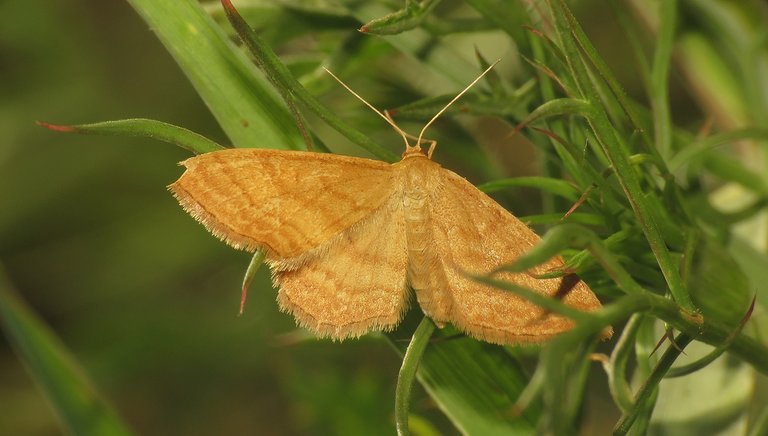
Here you can see the Idaea sanguinaria, a moth from the Geometridae family. I saw him flying around and then took this photograph when the insect landed on the fennel.
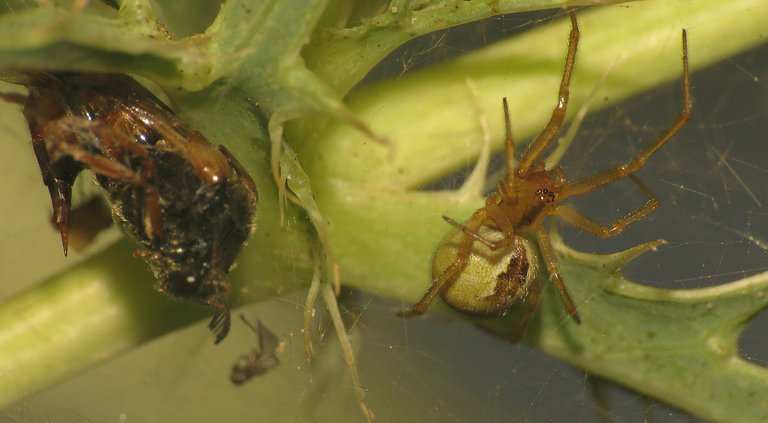
This very small spider, the Kochiura aulica, was photographed on the Eryngium amethystinum plant.
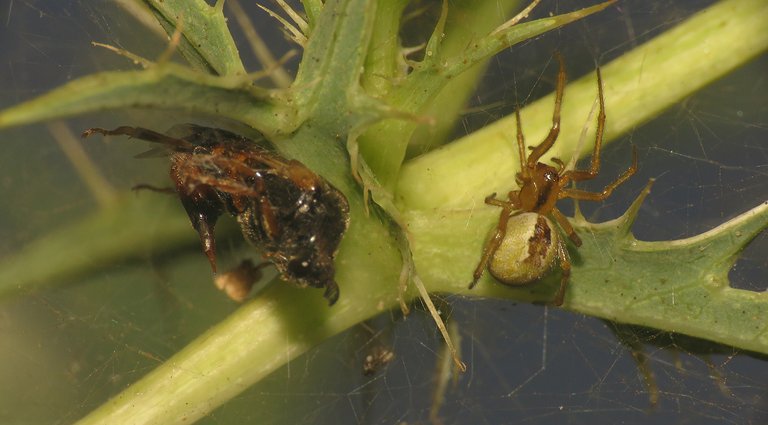
The prey enveloped in silk it's some sawfly. Don't know the exact species.
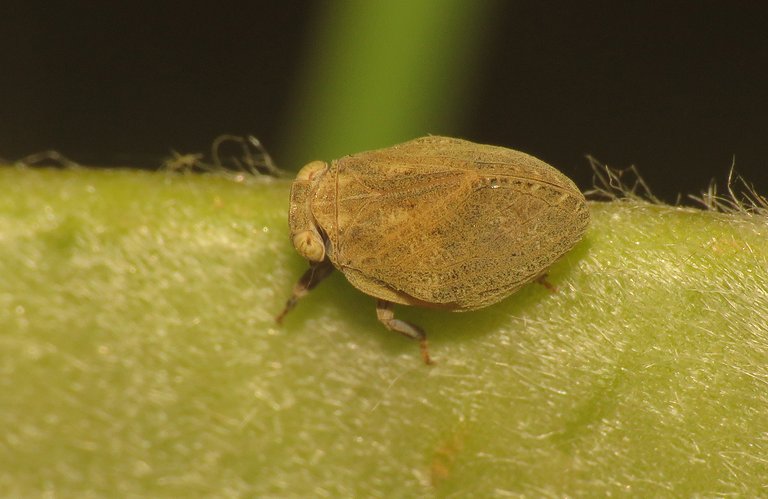
Here you can see the Agalmatium bilobum planthopper.
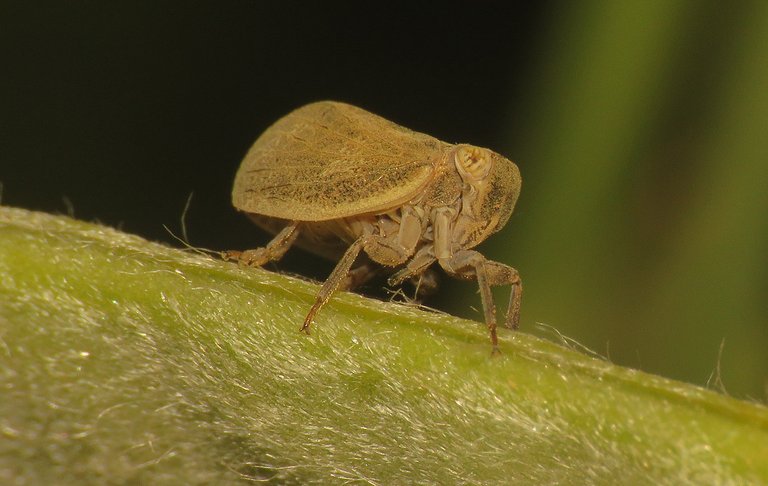
I don't remember on which plant was this insect photographed, and the macro view doesn't help me recognize the species.
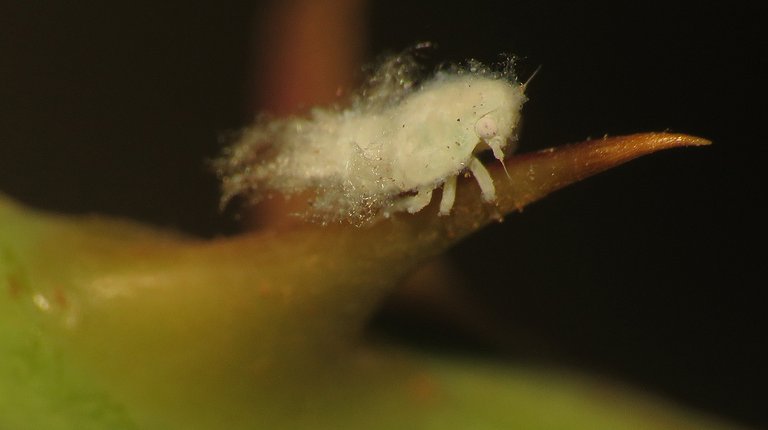
This nymph of the Metcalfa pruinosa planthopper was caught on the blackberry shrub. This macro view helps a lot because the iconic thorn is present in the shot and furthermore, I always encounter this invasive species on blackberry plants. Metcalfa pruinosa is native to North America.
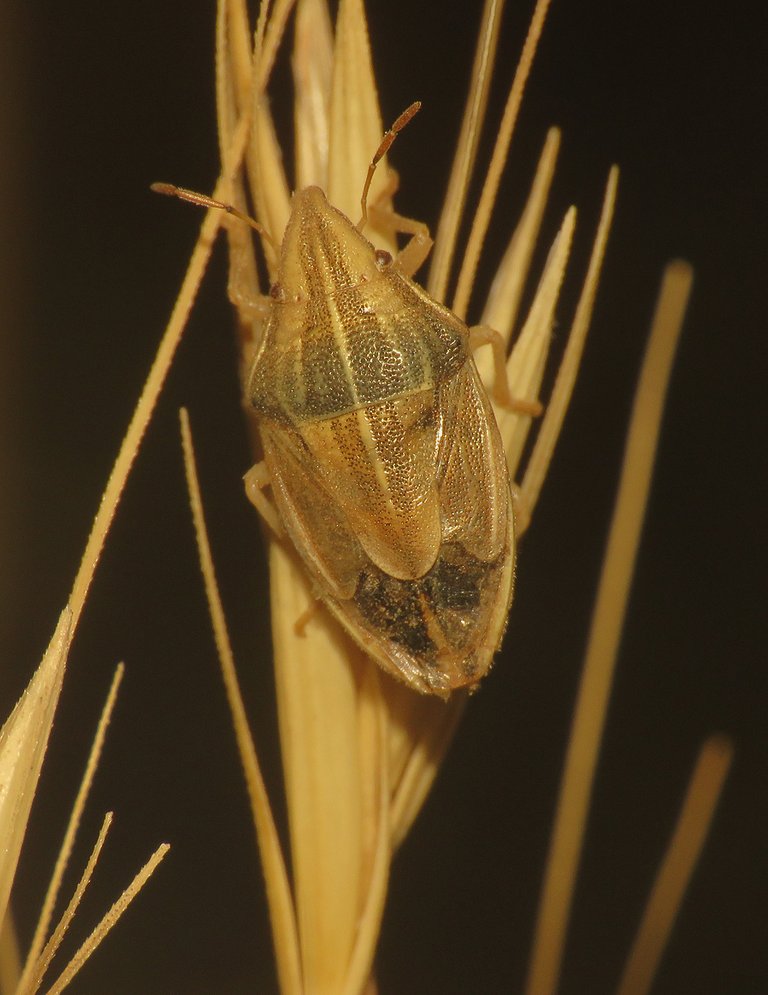
The vegetation a dozen of meters from the shore, just across the dusty road, is considerably different. Brown, yellow, and pretty dry. Here you can see the Bishop's Mitre Shieldbug (Aelia acuminata)
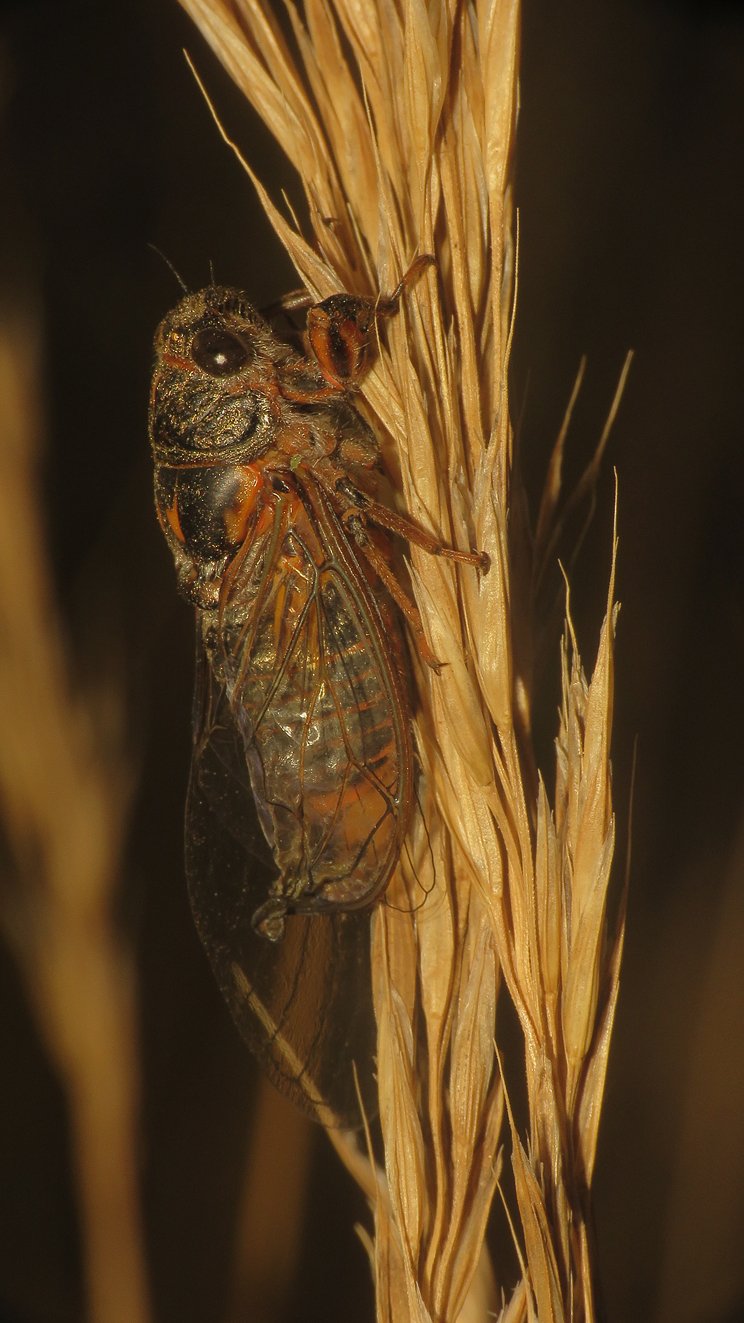
These insects on the dried-out vegetation were photographed after the sunset, on my way back to the car. Here you can see a cicada. Tibicina haematodes it's the name of the species.
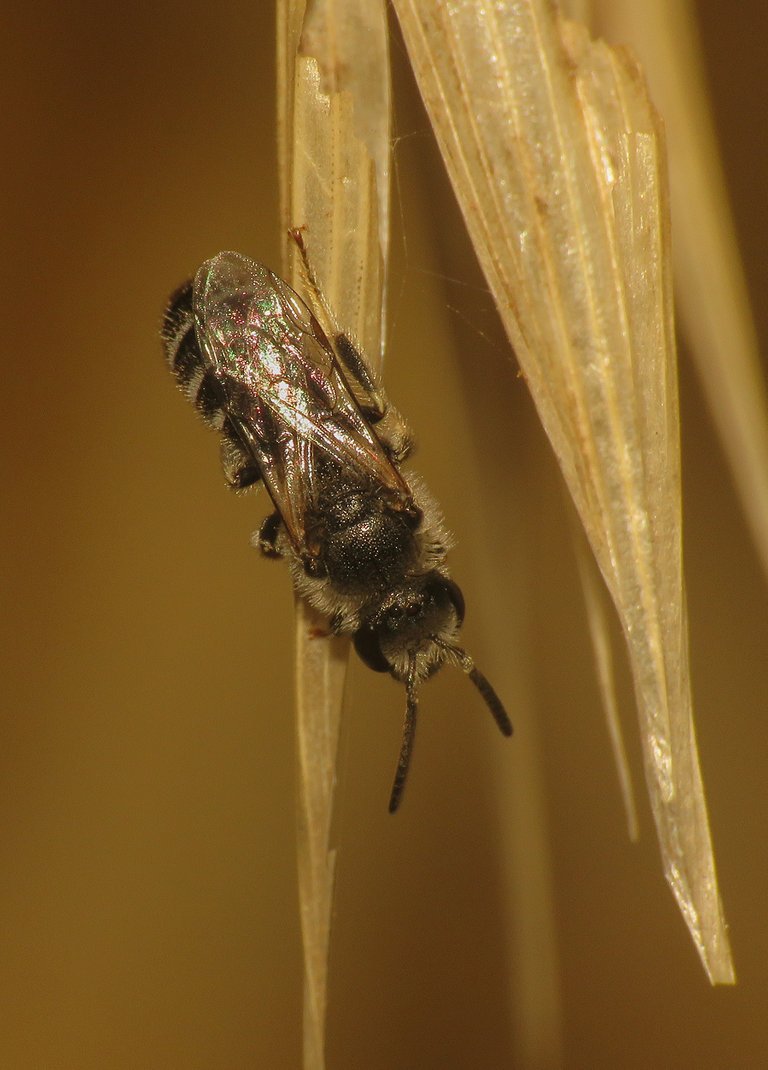
This is some small, solitary bee that will probably spend the night on the ear of grass. Here I can't tell you the name of the species.
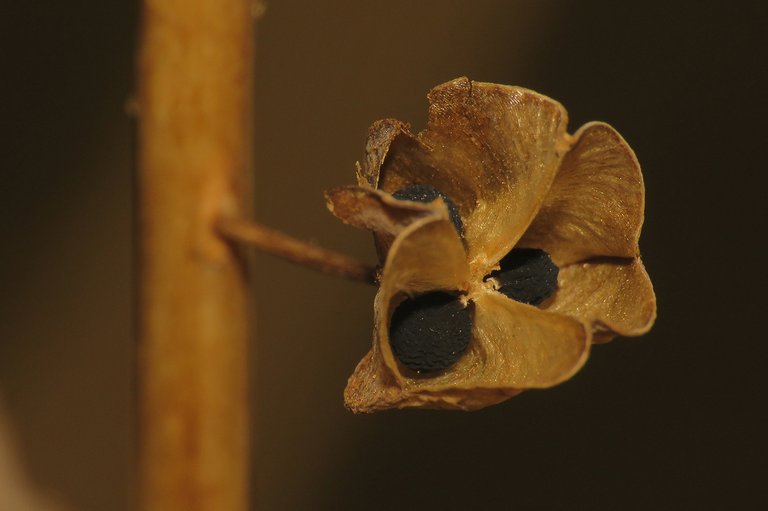
Here you can see a flower-like seed pod with black seeds in it. Although it looks familiar, can't tell you what plant it is. I'm pretty sure that I already found it while preparing one of my already published posts, but right now I'm too tired for an extensive search through old stuff.
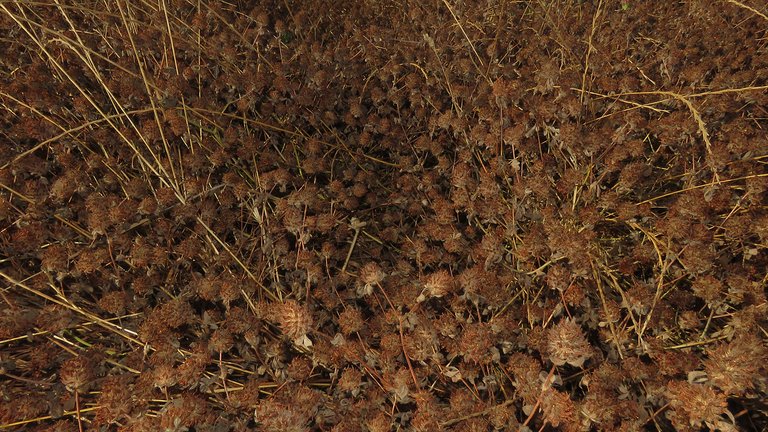
This is a dried-out field covered with clover.
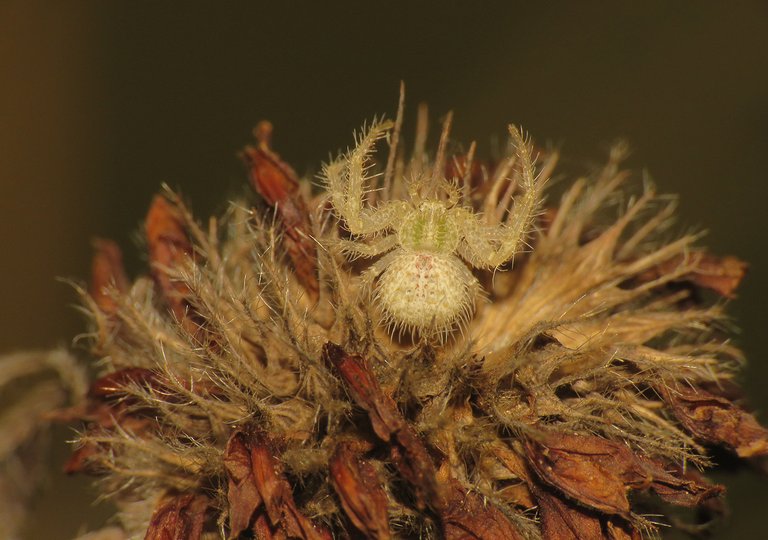
This hairy crab spider, the Heriaeus hirtus ...
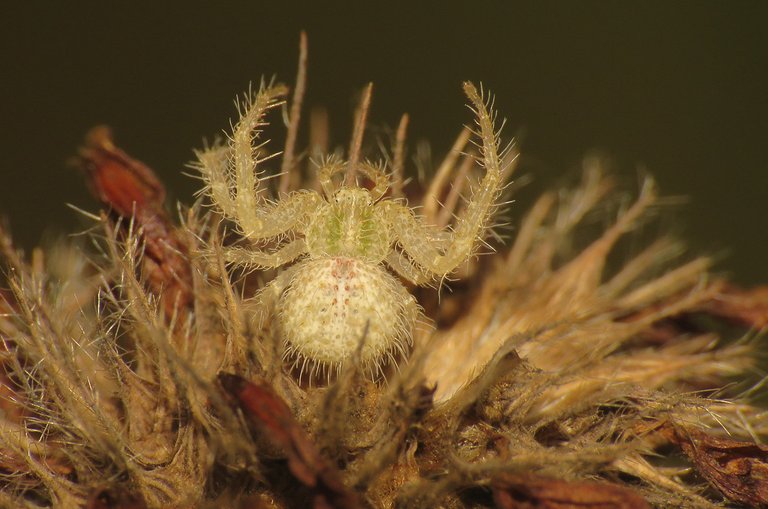
... was waiting in ambush, camouflaged on one of those dried-out plants.
And that's it. The last post of 2021. See you next year. I'm ready to celebrate the end of the year in the good company of a bunch of sleepy cats. As always in these posts on HIVE, the photographs are my work - THE END.
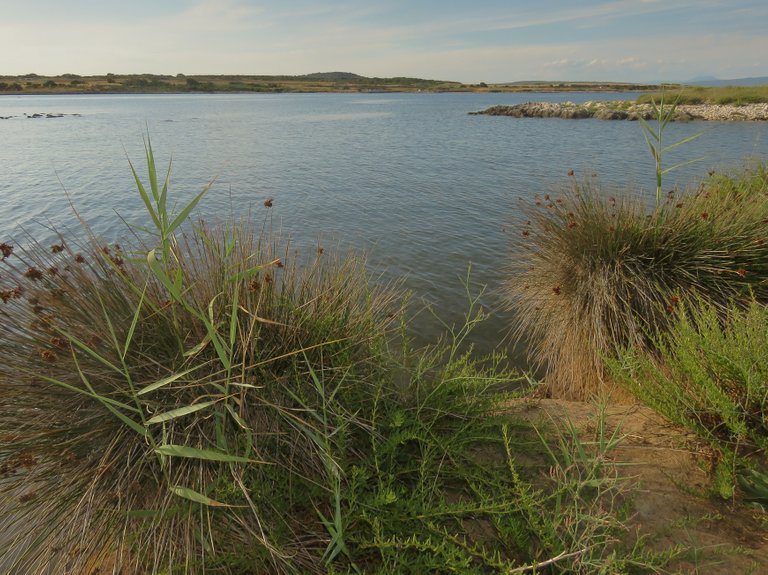
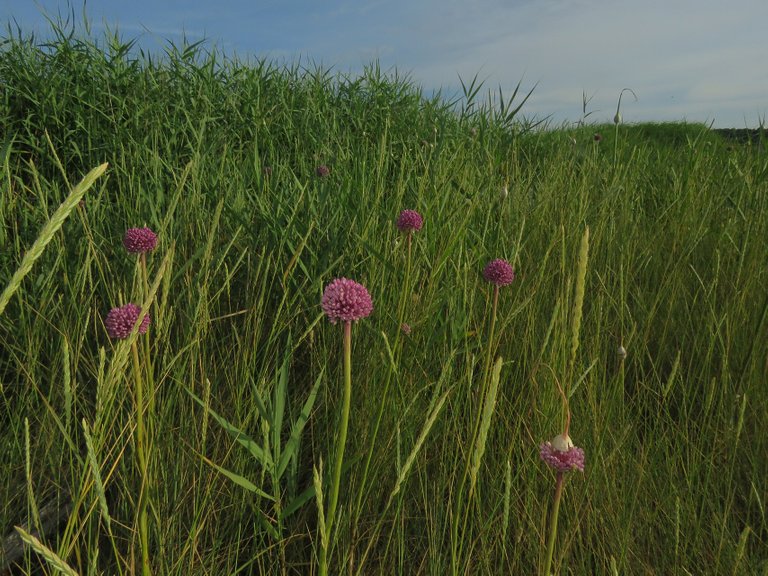
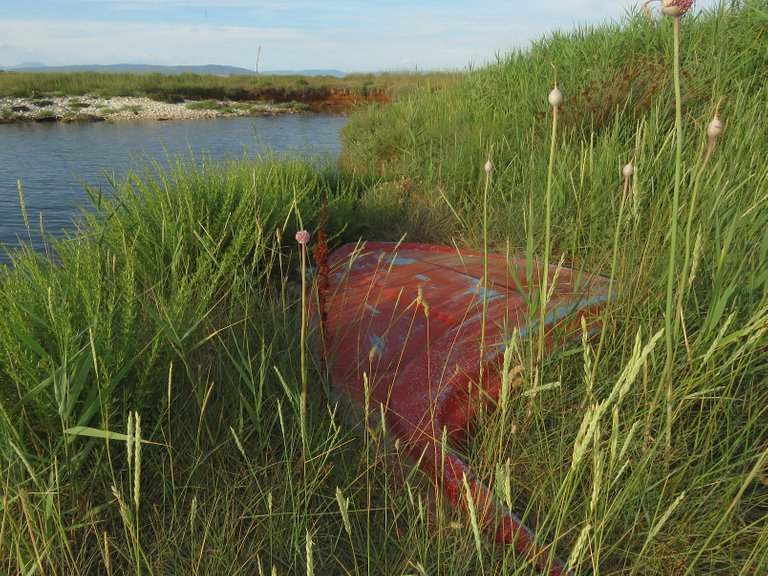
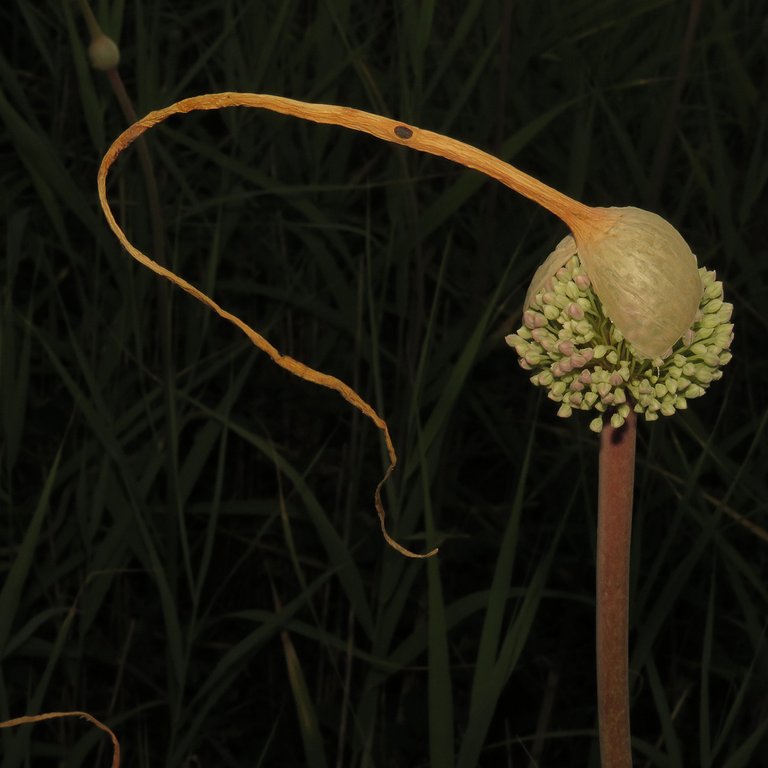

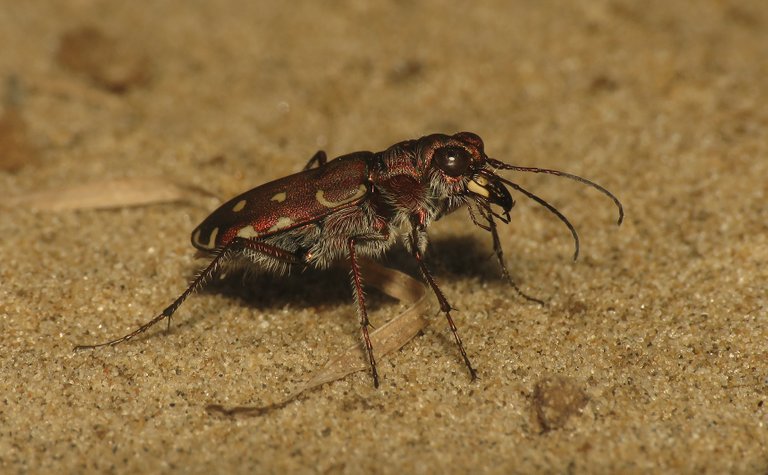
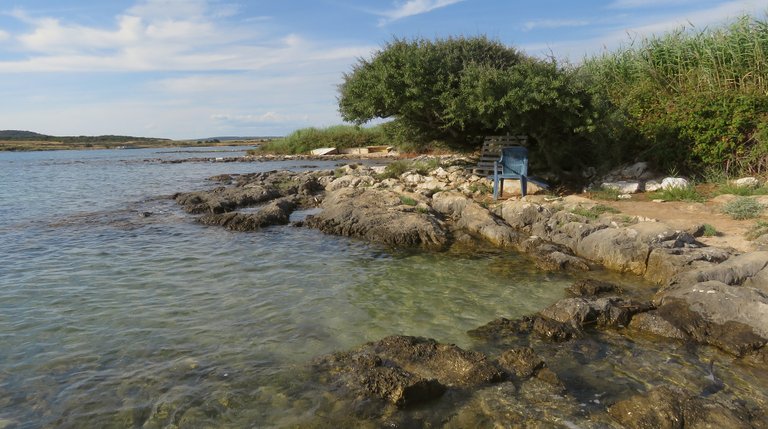
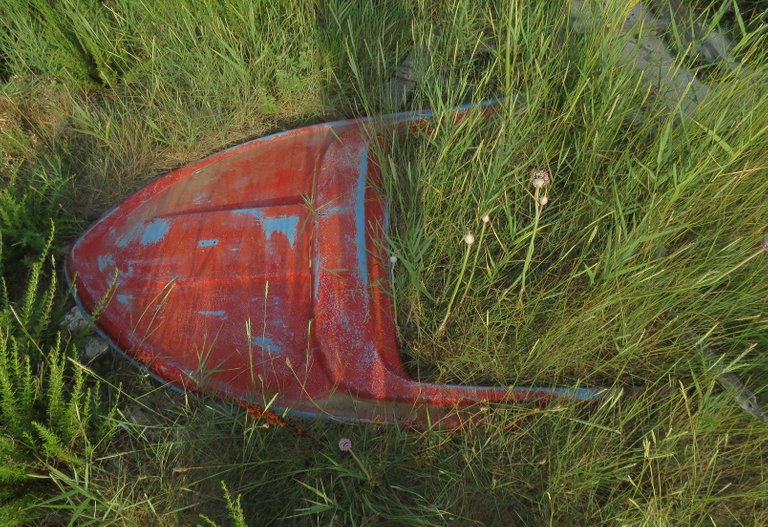
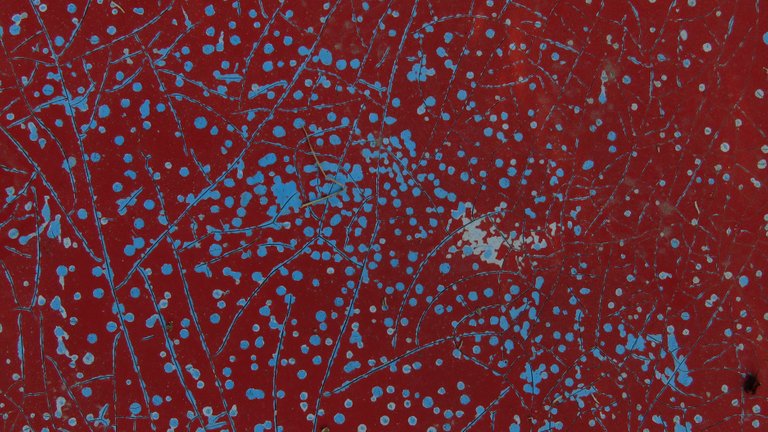


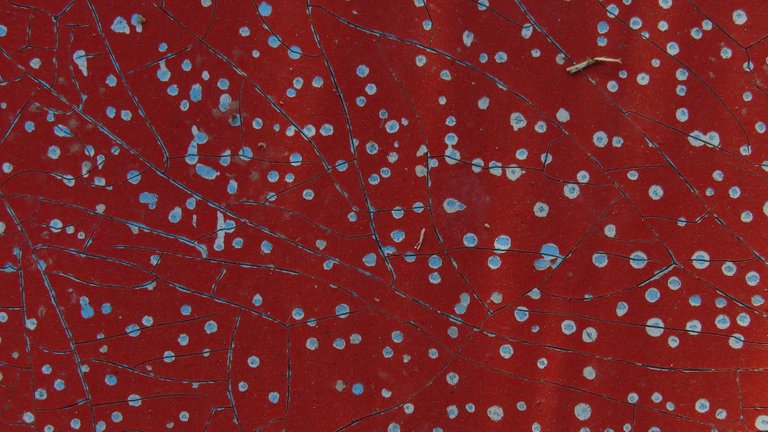
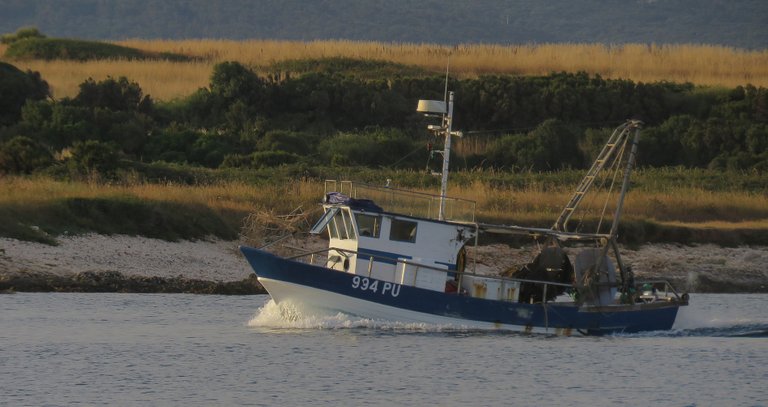
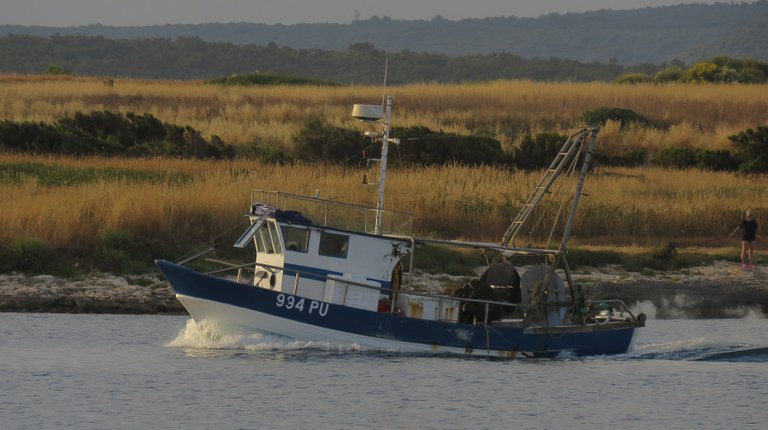
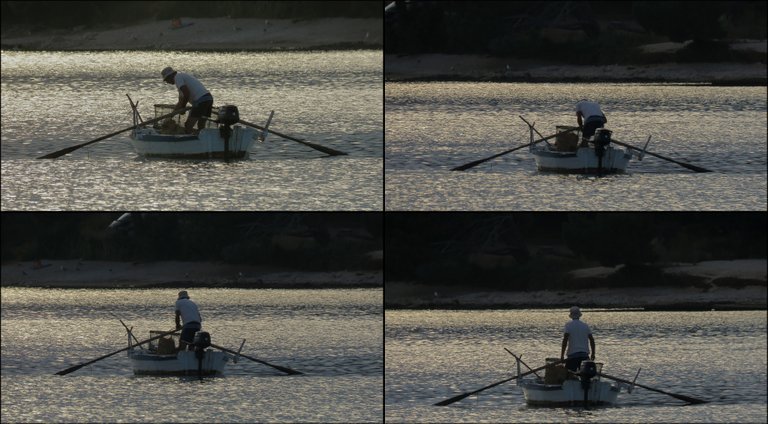
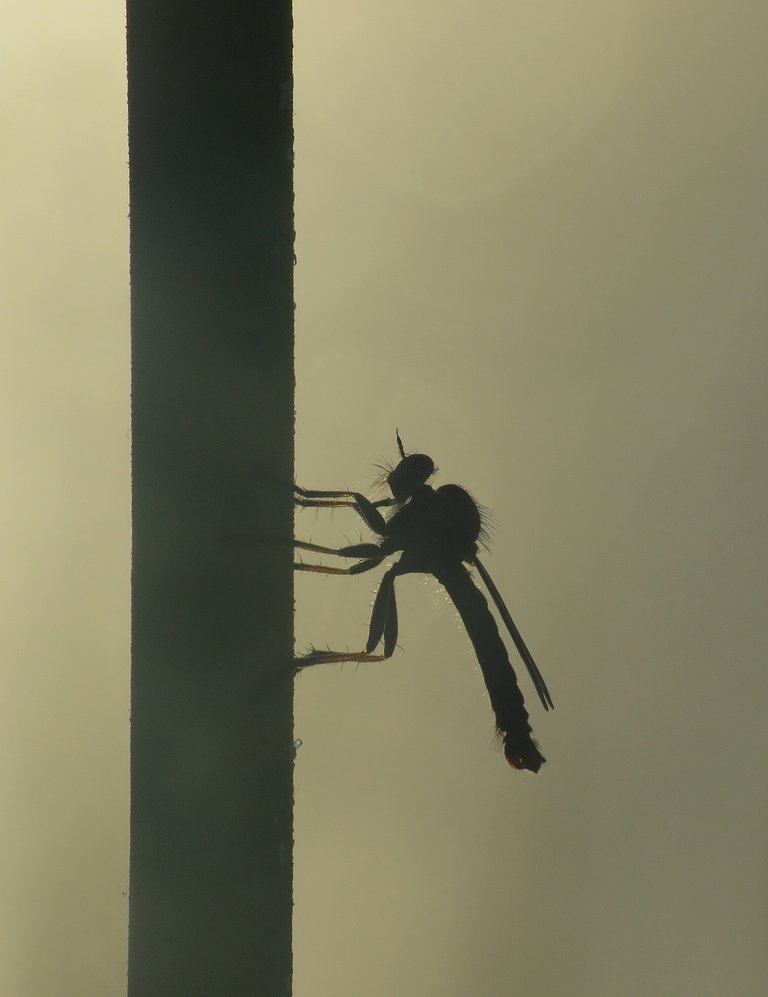
Congratulations, your post has been added to Pinmapple! 🎉🥳🍍
Did you know you have your own profile map?
And every post has their own map too!
Want to have your post on the map too?
What beautiful photographs dear friend @borjan excellent shots. Congratulations. big shots
Happy New Year. May this year come to you with blessings, peace, joy, health and prosperity.
Thank you. 🙂Have a great 2022.
Lovely pictures as always
A whole lot of pictures to take a glance through of
Kind of those photography most of the shot were taken during nightfall
Awesome flora and fauna macro images! Thanks for sharing them!
The detail on the Eupholidoptera schmidti bushcricket! Wonderful! "In between those two-thirds ..." is a VERY cool photo of the sea garlic bud.
Crazy macros mate... don't even grasp the technique you need to grasp those. All with a stand I would imagine at those distances, otherwise the cameras have evolved beyond my knowledge like hell!
Yes 🙂now is possible to take a very solid macro even with the smartphone. But it still takes plenty of patience and a bit of collaboration from the insect. I'm using the flash so the shutter speed can be pretty high and don't need the stand, fortunately. Photographing with a tripod in nature with the insect running around is often very clumsy and frustrating.
That wild garlic is a beautiful flower, but for many it smells repulsive, so its beauty falls into the water ;))
Great photos! I especially liked the insects. Nature made them perfect.